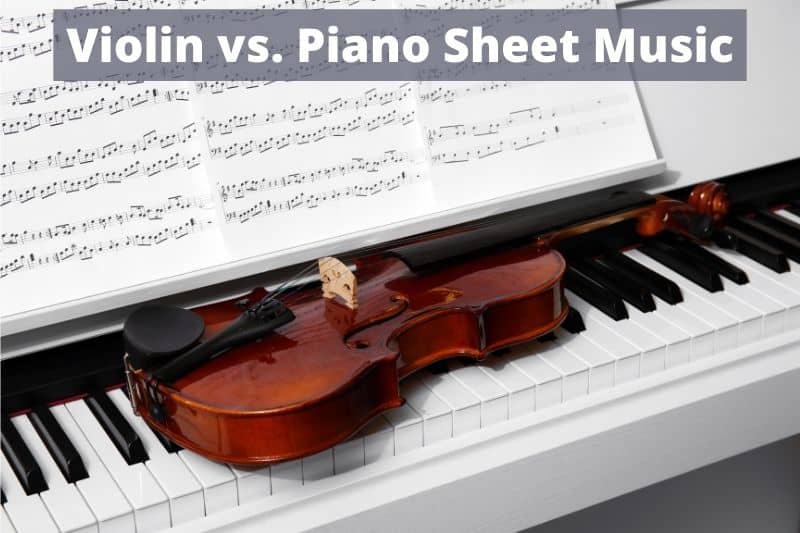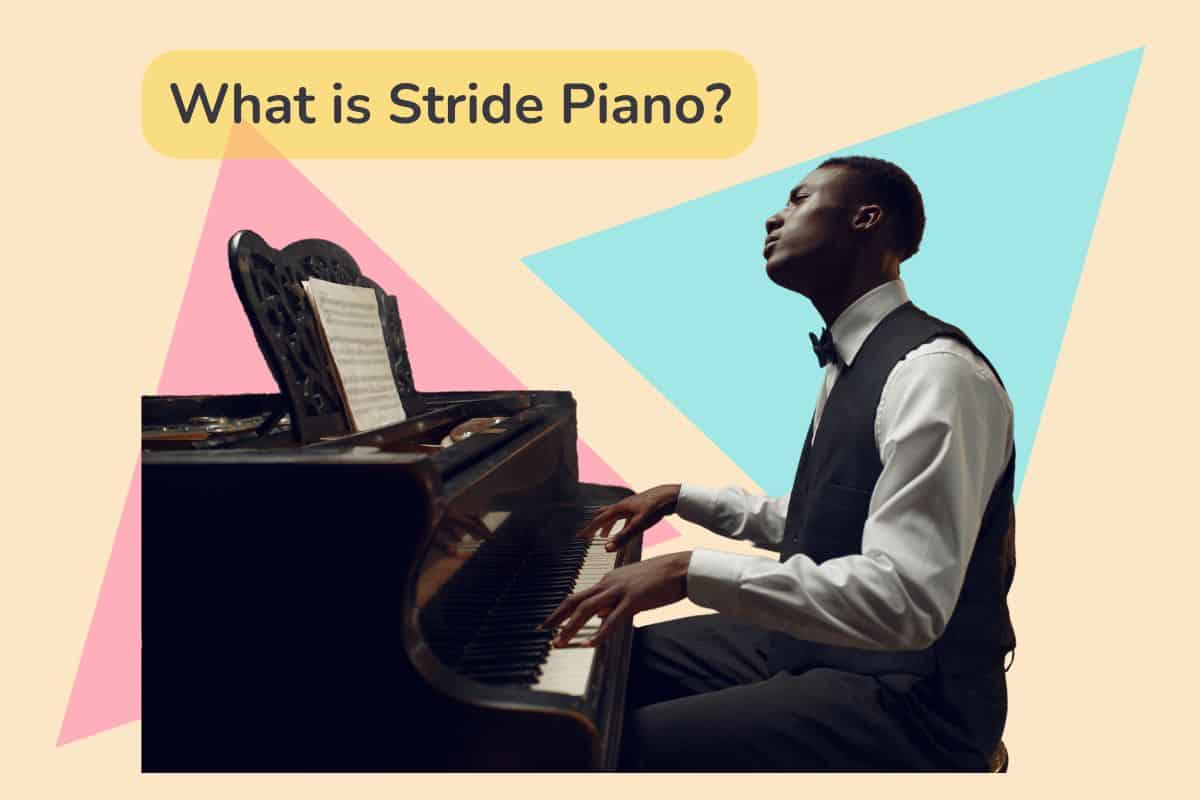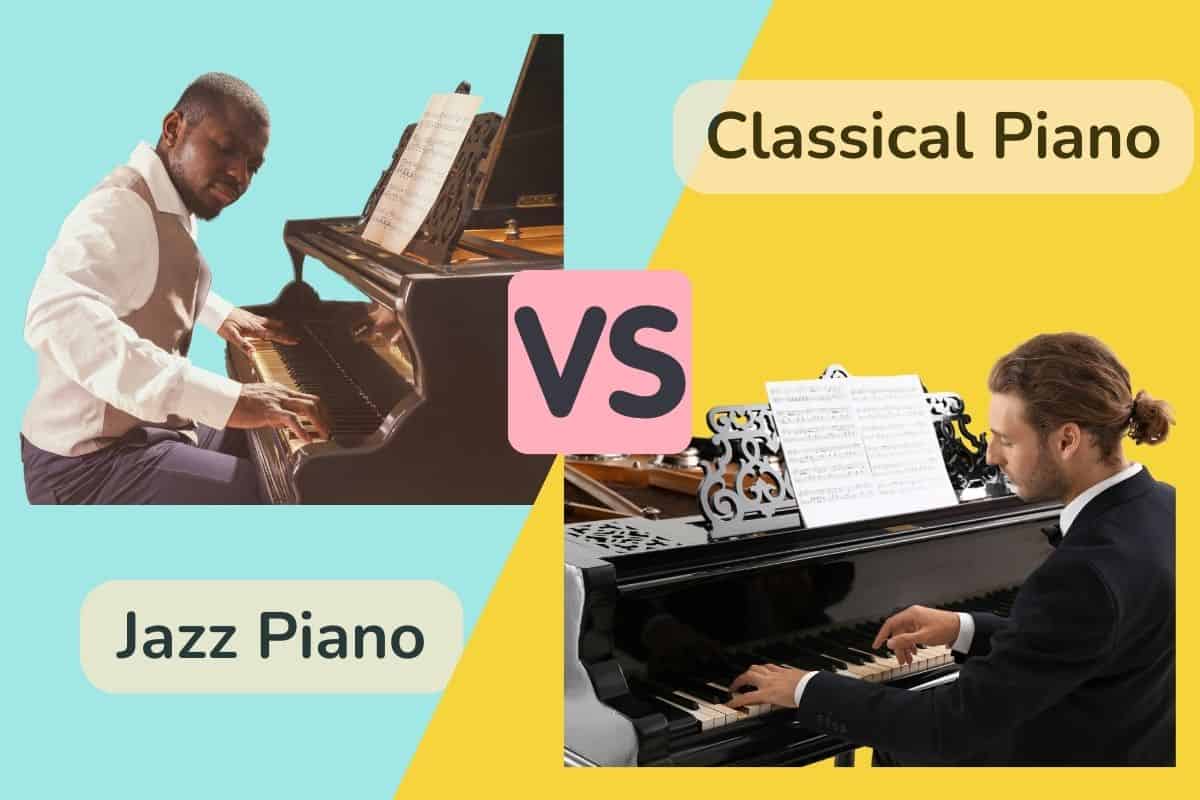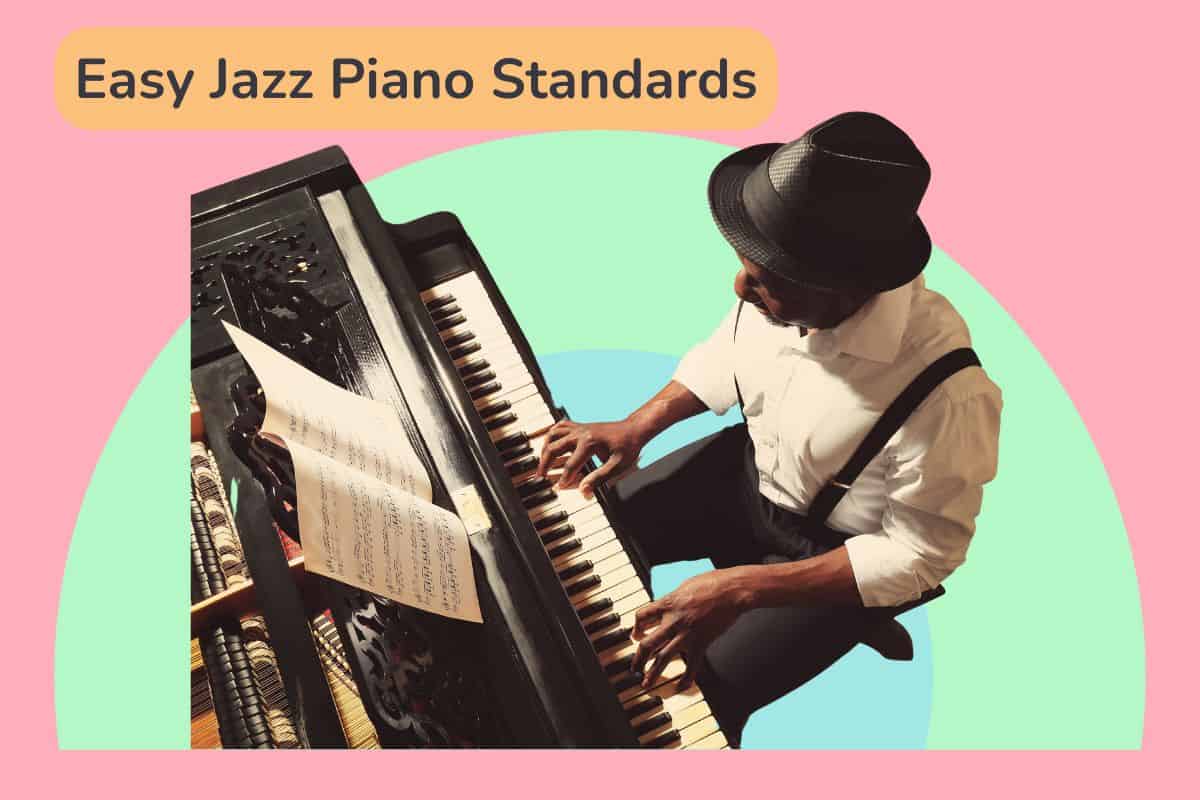For those thinking about learning the violin after having already learned the piano or vice versa, you might be wondering if the technicalities for the sheet music will be very different. Will you be able to follow along and play in tune, or will you have to learn everything all over again?
While piano music uses both the treble and bass clef, violin sheet music tends to only use the treble clef. Both instruments are tuned to C, so music scores will be the same. Besides this, the only other differences are instrument-specific stylistic variations like staccato and bow direction.

To learn more about the differences between the musical scores for these two instruments, stay tuned!
What Is Sheet Music?
Sheet music, also known as a score, refers to musical notation that shows the pitch, rhythm, or chords of a piece. However, musical notation is not a singular language that all the instruments can read. Instead, it consists of a bunch of different dialects catered towards other instruments.
For instance, the same pitch on the same clef can sound different depending on the instrument you’re playing it on. The reason behind this can be summed up in one phrase – transposing instruments. Transposing instruments don’t follow concert pitch, where they are tuned so that the note sounded out at 440 hertz is an ‘A.’
However, transposing instruments face the problem of being pitched differently from concert pitch instruments. As a result, to produce a corresponding regular sound, the transposing instrument needs to play a note a few pitches higher or lower to match it.
This is reflected in the sheet music, where notes are printed out either higher or lower on the staff. Thus, depending on the instrument you’re playing, attempting to read can create a wholly unique sound and key that probably sounds nothing like the sound produced when played on the original instrument.
For context, here are some examples of common transposing instruments:
- Clarinets
- Alto/Baritone Saxophone
- English Horn
- Trumpet
- Euphonium
Fortunately, both the violin and the piano are C instruments and follow concert pitch. If you play these instruments, you can switch from violin to piano music without worrying about transposing your tunes.
Are Violin Notes And Piano Notes The Same?
Piano and violin notes are the same as they follow the same clef conventions and are both non-transposing instruments. Although the piano uses both the treble and bass clef while the violin only uses a treble clef due to the pitch range, you can play either piece of music with the same sound.
How Do You Convert Piano Notes To Violin?
If you find a great piece of piano music that you want to turn into a violin piece, it’s not always as easy as just exclusively playing what you see on the treble clef. While the left hand for the piano typically provides the accompaniment, like the Alberti bass, and can usually be discarded in favor of the melodic right hand, this isn’t always the case.
You might also want to incorporate more texture into a violin piece by including some, if not all, left-hand parts. However, you will need to know how to break down chords, commonly found as part of the harmonic accompaniment, so that you can play them easily on the violin. With all of that in mind, here’s a list of steps that you need to take when converting a piece of music from piano to violin:
- Copy the treble clef part over. A standard violin ranges from the G below the middle C to a very high C, so any notes on the treble clef should be copied over.
- Tackle the chords. Piano sections can come with very complicated four or five-note chords. However, violin chords are only present in terms of dyads – it is only possible for a player to push down on two notes on two different strings and bow across. Therefore, you need to experiment with a dyad’s overtones and undertones because the sound will change depending on the top note. You should also remove repeated notes.
- Add stylistic tips. Some stylistic tips like loudness or the tone can easily be brought over into a violin’s sheet music. However, it is up to you to draw upon your knowledge of string technique and decide if you want to add different styles to make them sound more interesting. Is the piece upbeat enough to merit ricochets? Would octave doubling be a good idea? These are all creative decisions that you must make yourself.
What Is The Difference Between Violin And Piano Sheet Music?
Although both violin and piano sheet music uses the treble clef, the violin uses just one clef while the piano has the grand staff, consisting of both the treble and bass clef. As the violin is a very high-pitched instrument, it arguably uses high notes more often, so you should prepare yourself to get used to decrypting ledger lines.
One of the most significant differences that you will see between these two is concerning the fingering for beginners. Piano sheet music uses a system of one to five, with one referring to the thumb. On the other hand, in violin sheet music, one usually refers to the index finger, so it can get confusing for newbie learners of the other instrument to play properly due to this technicality.
Besides this, you will also face many instrument-specific style symbols, like the direction of your bowing or indications that you need to perform a specific technique like tremolo or staccato.
If you’re looking to learn music theory, it would be better to use piano sheet music as it clearly illustrates basic concepts through the harmonic connotations of the bass clef. The bass clef commonly uses different layers and types of chords, leading you to identify diminished or subdominant chords that are widely tested for music theory exams.
On the other hand, these theoretical associations are usually just implied in violin sheet music due to their lack of a bass clef, and you need to really search to figure out what’s going on.
Other than these differences, violin, and piano scores are mostly the same.
Conclusion
Suppose you’re looking to choose between learning the piano or violin or looking to start playing one after grasping the basics in the other. In that case, it’s worth noting that the fundamentals of both piano and violin sheet music are the same.
There will be some new instrument-specific symbols you will need to familiarize yourself with, but the music and tones will sound the same.



